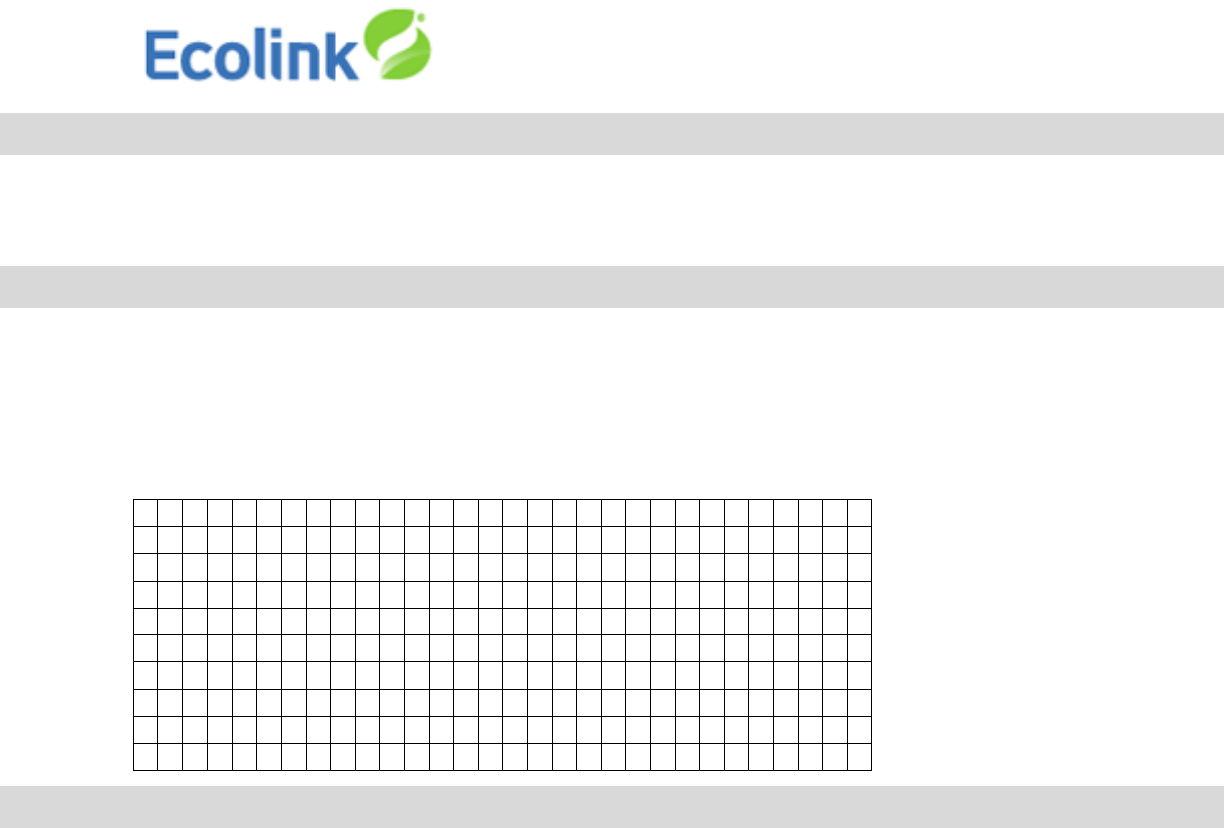Ecolink Intelligent Technology DWZ1 Z-WAVE WIRELESS DOOR/WINDOW SENSOR User Manual
Ecolink Intelligent Technology, Inc. Z-WAVE WIRELESS DOOR/WINDOW SENSOR
User Manual

This sensor is a Z-Wave enabled device (interoperable, two-way RF mesh networking technology) and is
fully compatible with any Z-Wave enabled network. The sensor sends a Z-Wave message when a door or
window is opened.
For indoor use only
Operating Frequency: 908.42 MHz
Operating Range: Up to 100 feet line-of-sight
Operating Temperature: 0⁰C to 49⁰C
Battery: CR123A
Notice: If you are installing the entire Z-Wave system for the first time, please refer to the installation
guide provided by the manufacturer of your Z-Wave controller before installing the door/window sensor.
1. Remove the plastic pull tab from the sensor to allow power to flow from the battery. The LED will
start to blink. Removal of the tab will automatically put the sensor into “inclusion mode”, the process
by which the sensor is learned into a Z-Wave network. If the controller already happens to be in
inclusion mode when the tab is pulled, the inclusion process will begin. The sensor will send out two
“node info frames” and the controller will acknowledge with a node ID and a home ID for the sensor.
If the inclusion process is successful, the LED on the sensor will stay lit for up to ten seconds and then
go dark. If inclusion was unsuccessful, the LED will continue blinking and the inclusion process must
be repeated. To enter inclusion mode at any time, make sure the controller is in inclusion mode. You
will need open the sensor’s back case (push down on the latch) and completely remove the battery.
The battery must stay disconnected for ten seconds. When the battery is replaced, check to see if
inclusion was successful by observing the LED. If inclusion was successful, the LED will remain lit
until the cover is replaced. If inclusion was unsuccessful, the LED will continue blinking.
Wireless Door/Window Sensor
Installation & Operation Manual
Introduction
Product Specification
Setup & Installation

2. The sensor can be mounted on the door or window frame using adhesive tape or screws. To use
adhesive tape, simply apply the tape to the back side of the sensor and stick it to the wall. To use the
screws you will need to remove the sensor’s front cover. Carefully remove the circuit board from the
back cover to access the screw holes.
3. The sensor is most reliable when the magnet is placed as close as possible to the arrow on the side of
the case. Stick the magnet to the moving part of the door or window so that the magnet is as close as
possible to the arrow on the sensor. (The sensor should be mounted on the stationary part of the
door/window.)
1. When triggered (door or window moved to an open position) the sensor will send a Z-Wave message of
type “basic set 0xFF”. When the door or window is restored to a closed position, a Z-Wave message of
type “basic set 0x00” is transmitted.
2. The sensor unit is programmed with two association groups. Group 1 can store the node ID of up to
five controllers. Controllers will all receive a “basic set 0xFF” when triggered and “basic set
0x00” once the sensor is restored to normal position. Group 2 stores the node IDs for up to 5
devices that can be activated when the sensor is triggered. Such devices include chimes, sirens, or
light switches. Each device in group 2 listens for Z-Wave messages of type “basic set
0xFF”.
3. To exclude the door/window sensor from a Z-Wave network place the controller into “exclusion mode”
(see controller manufacturer’s instructions to put the controller into exclusion mode). Once the
controller is in exclusion mode, remove the battery from the door/window sensor.
This device complies with Part 15 of the FCC rules. Operation is subject to the following two conditions:
1. This device may not cause harmful interference.
2. This device must accept any interference received, including interference that may cause undesired
operation.
Changes or modifications not expressly approved by Ecolink Intelligent Technology, Inc. can void the
users’ authority to operate the equipment.
Federal Communications Commission Statement
Operation